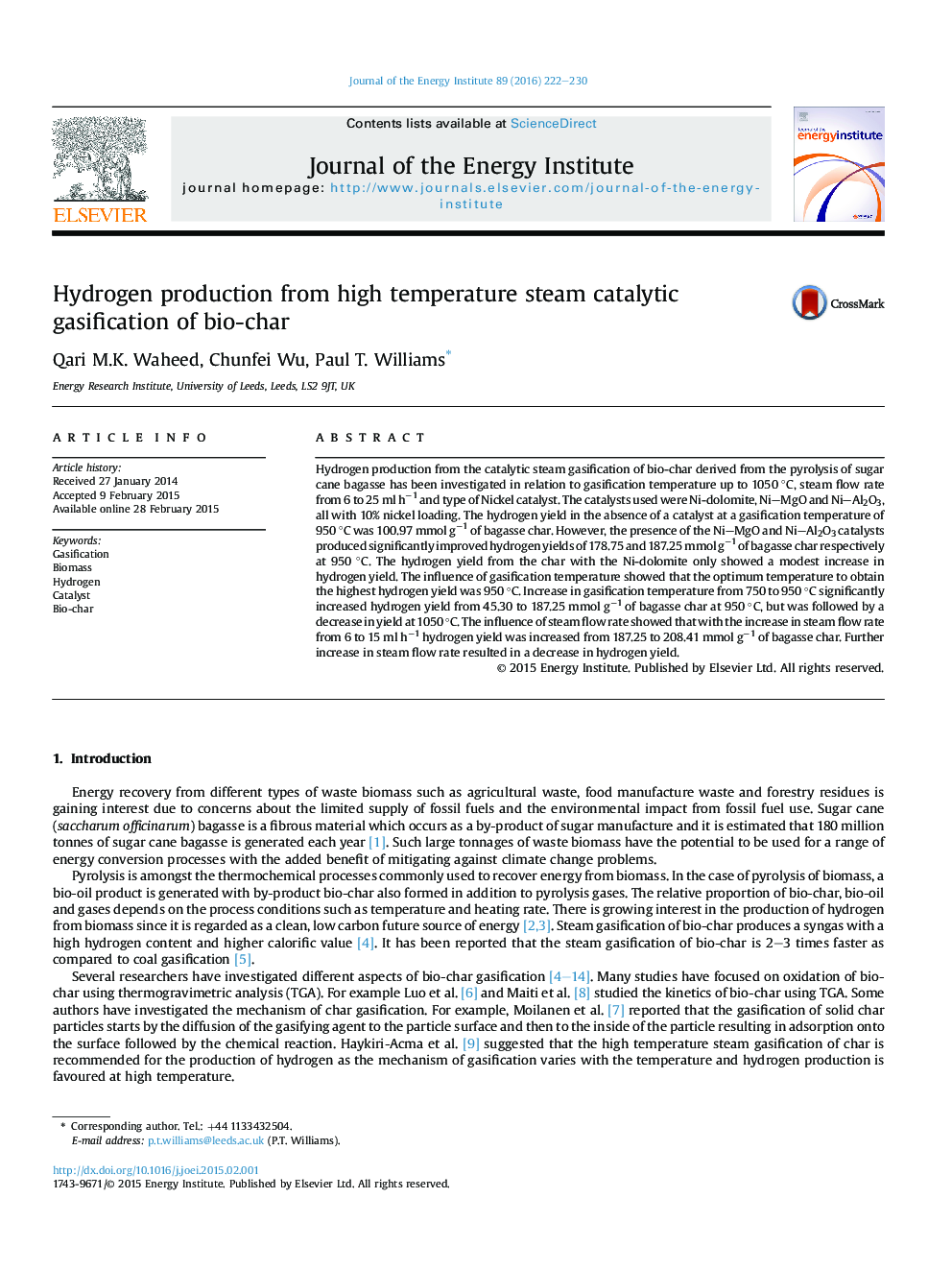| Article ID | Journal | Published Year | Pages | File Type |
|---|---|---|---|---|
| 1747647 | Journal of the Energy Institute | 2016 | 9 Pages |
•H2 from the catalytic steam gasification of bio-char has been studied.•Ni–MgO and Ni–Al2O3 catalysts produced significantly improved H2.•Increase in gasification temperature from 750 to 950 °C increased H2 yield.•Increase in steam flow rate from 6 to 15 ml h−1 increased H2 yield.•Maximum H2 yield was 208.41 mmol g−1 of char.
Hydrogen production from the catalytic steam gasification of bio-char derived from the pyrolysis of sugar cane bagasse has been investigated in relation to gasification temperature up to 1050 °C, steam flow rate from 6 to 25 ml h−1 and type of Nickel catalyst. The catalysts used were Ni-dolomite, Ni–MgO and Ni–Al2O3, all with 10% nickel loading. The hydrogen yield in the absence of a catalyst at a gasification temperature of 950 °C was 100.97 mmol g−1 of bagasse char. However, the presence of the Ni–MgO and Ni–Al2O3 catalysts produced significantly improved hydrogen yields of 178.75 and 187.25 mmol g−1 of bagasse char respectively at 950 °C. The hydrogen yield from the char with the Ni-dolomite only showed a modest increase in hydrogen yield. The influence of gasification temperature showed that the optimum temperature to obtain the highest hydrogen yield was 950 °C. Increase in gasification temperature from 750 to 950 °C significantly increased hydrogen yield from 45.30 to 187.25 mmol g−1 of bagasse char at 950 °C, but was followed by a decrease in yield at 1050 °C. The influence of steam flow rate showed that with the increase in steam flow rate from 6 to 15 ml h−1 hydrogen yield was increased from 187.25 to 208.41 mmol g−1 of bagasse char. Further increase in steam flow rate resulted in a decrease in hydrogen yield.
